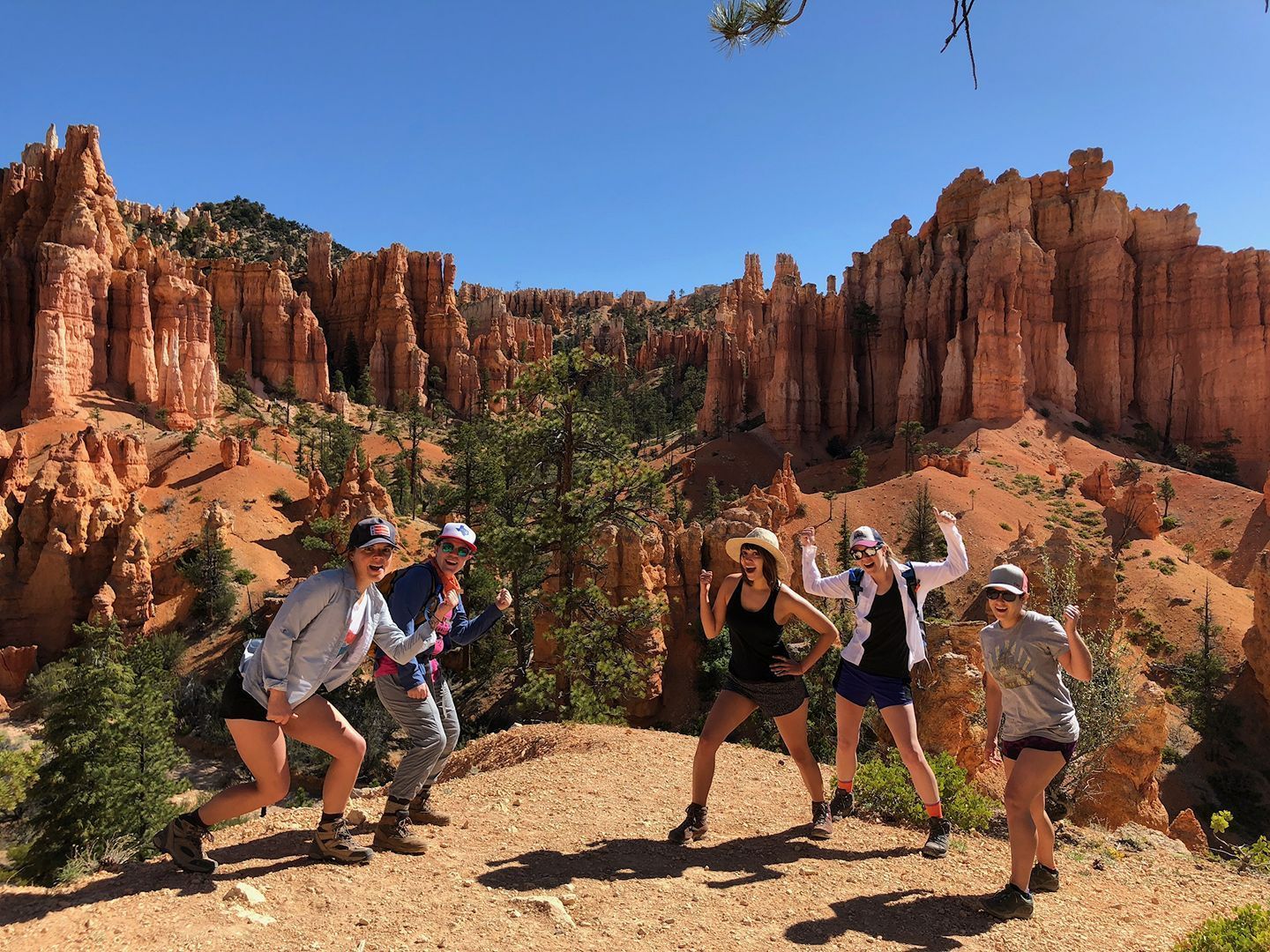Grand Canyon Backcountry with Four SEason Guides
True Wilderness Adventures With Four Season Guides
If you’re seeking a true wilderness adventure in vast, beautiful backcountry, then a guided Grand Canyon backpacking tour is the perfect choice. We have crafted the best backpacking itineraries to showcase the wonders of Grand Canyon’s more secluded and spectacular areas. We will delve deep into this rugged landscape and experience amazing opportunities for exquisite solitude and discovery.
Our backpacking trips are strenuous endeavors that involve carrying everything we need on our backs for the duration of the trip. Expect to hike each day with roughly 30 to 45 pounds, depending on the specific trip, number of days, and time of year. Most backpacking trips range from 3 to 6 days in duration.
All Grand Canyon backpacking tours include nearly all necessary gear (top-quality backpacks, sleeping bags, sleeping pads, tents, trekking poles, cooking and eating gear), all food for the duration of the trip, transportation to/from trailheads via Flagstaff, AZ, and a licensed, professional Grand Canyon guide. The only things you need to bring are your personal clothing and footwear, raingear, personal toiletries, headlamp, and water bottles or hydration bladder.
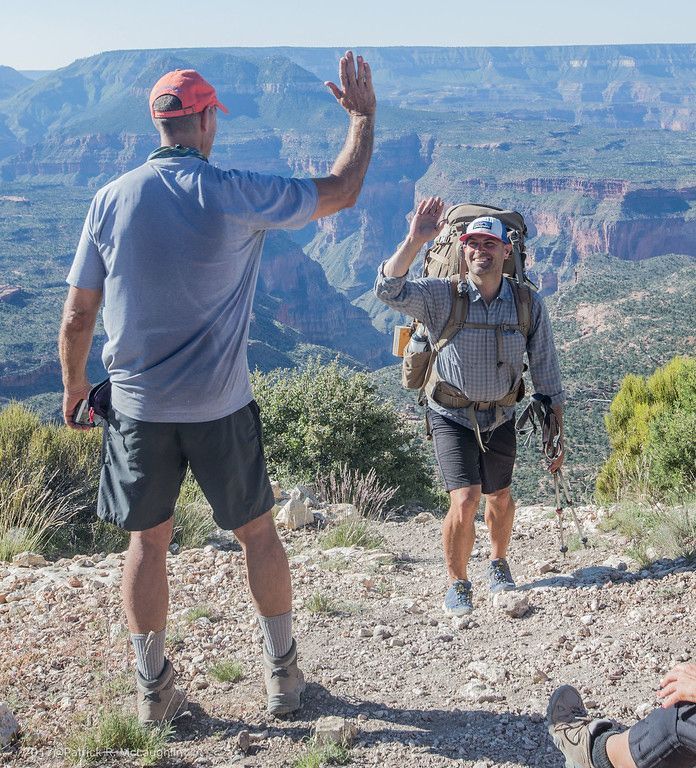
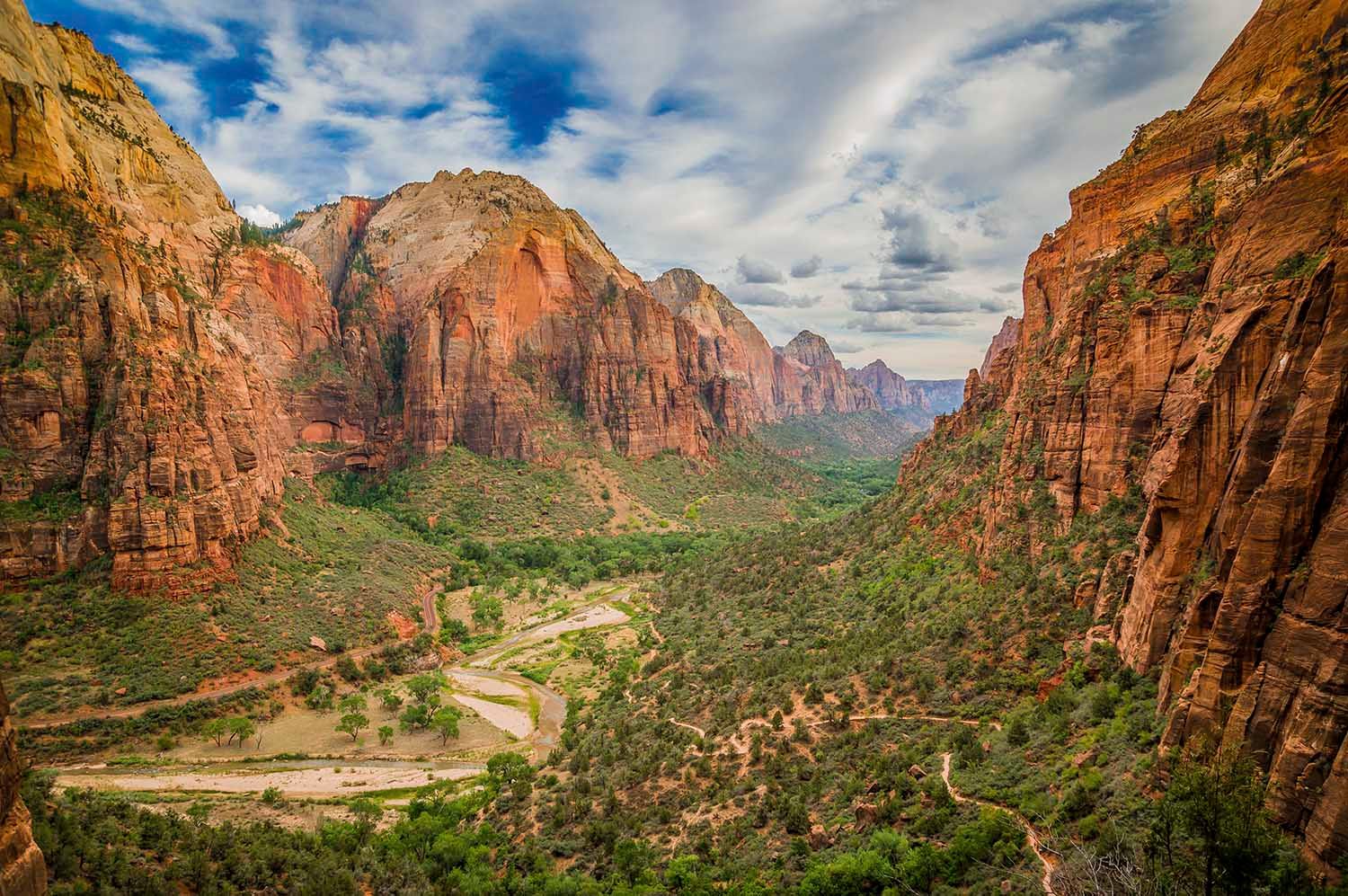
Trip Type: Backpacking
Duration: 4 Days
Distance: 24 miles
Difficulty: Intermediate
Starting at


Winter Rim To Rim
Rim to Rim
Trip Type: Backpacking
Duration: 3 or 4 days
Distance: 17 to 24 miles
Difficulty: Intermediate
Canyon Classic
$1,875
Trip Type: Backpacking
Duration: 5 days
Distance: 45 miles
Difficulty: Intermediate +
$1,900
Starting at
Starting at
$1,400
Excursions for Every skill Level
Most Popular Grand Canyon Adventures
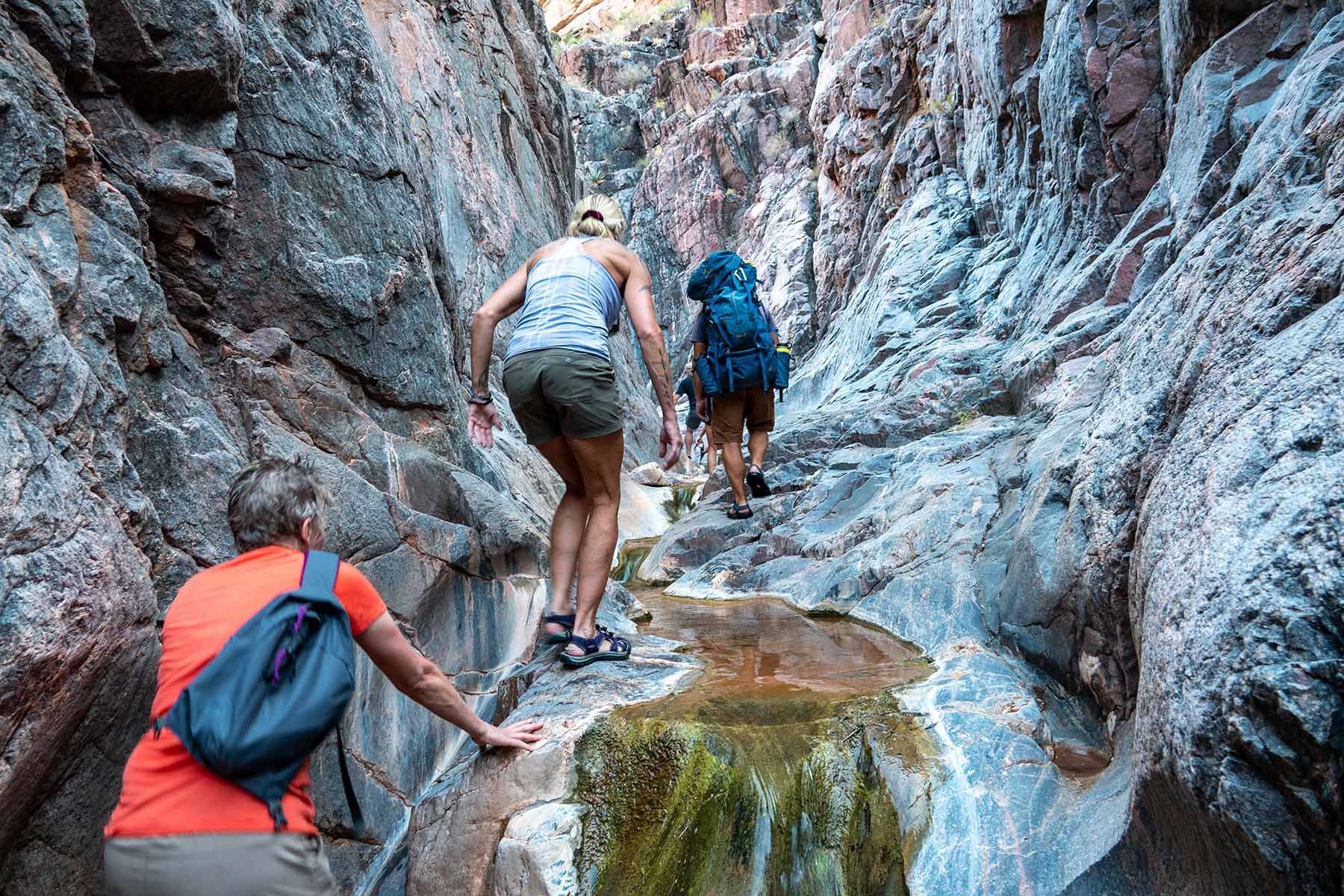
Starting at
$1,900
Hermit Loop
Trip Type: Backpacking
Duration: 4 or 5 days
Distance: 27 or 32 miles
Difficulty: Intermediate +
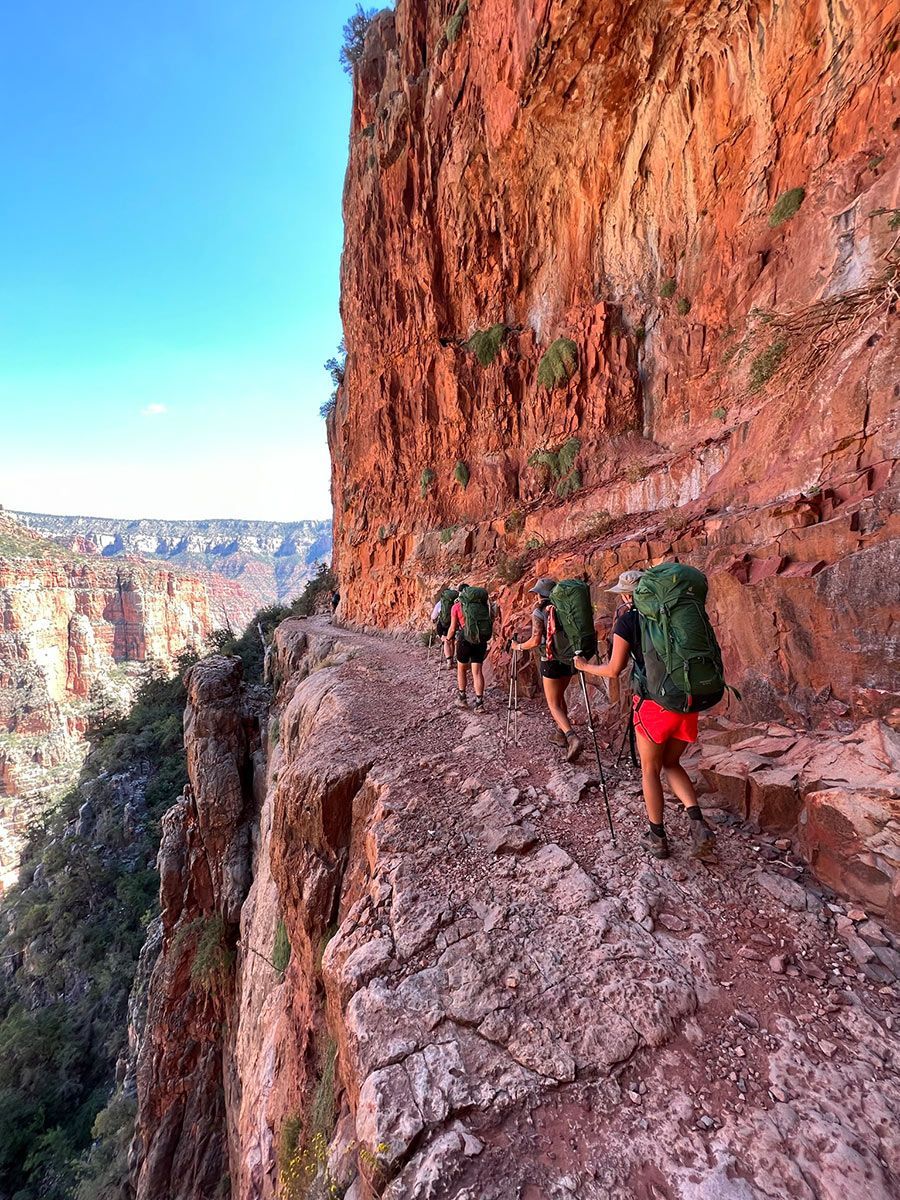
Starting at
$2,250
Rim to Rim
Trip Type: Backpacking/Camping
Duration: 4 Days
Distance: 24 miles
Difficulty: Intermediate
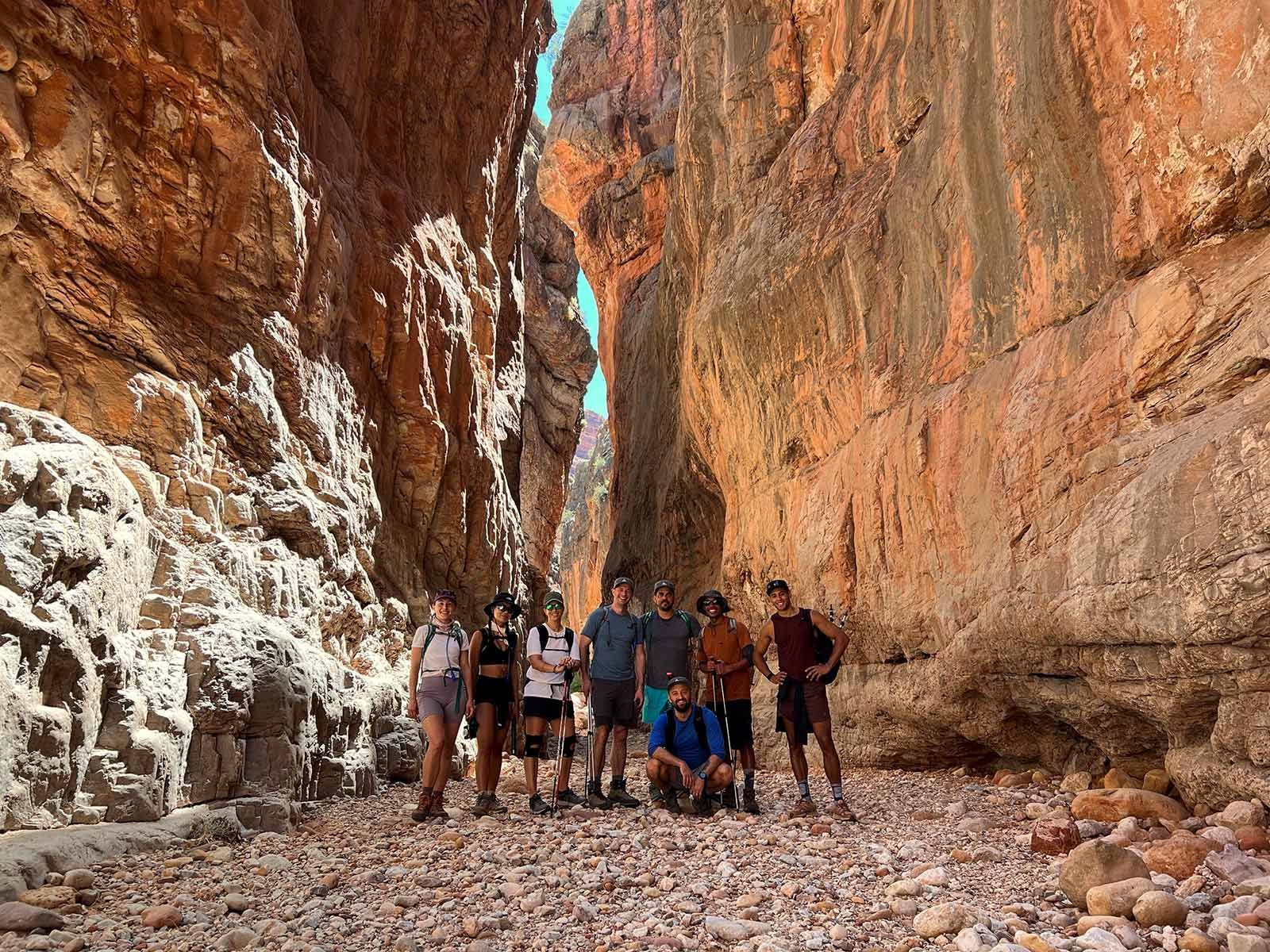
Kanab Creek Wilderness
Trip Type: Backpacking
Duration: 4 Days
Distance: 25 miles
Difficulty: Intermediate +
Starting at
$1,900

Starting at
$1,650
Canyon Classic
Trip Type: Backpacking
Duration: 3 or 4 Days
Distance: 17 to 24 miles
Difficulty: Intermediate
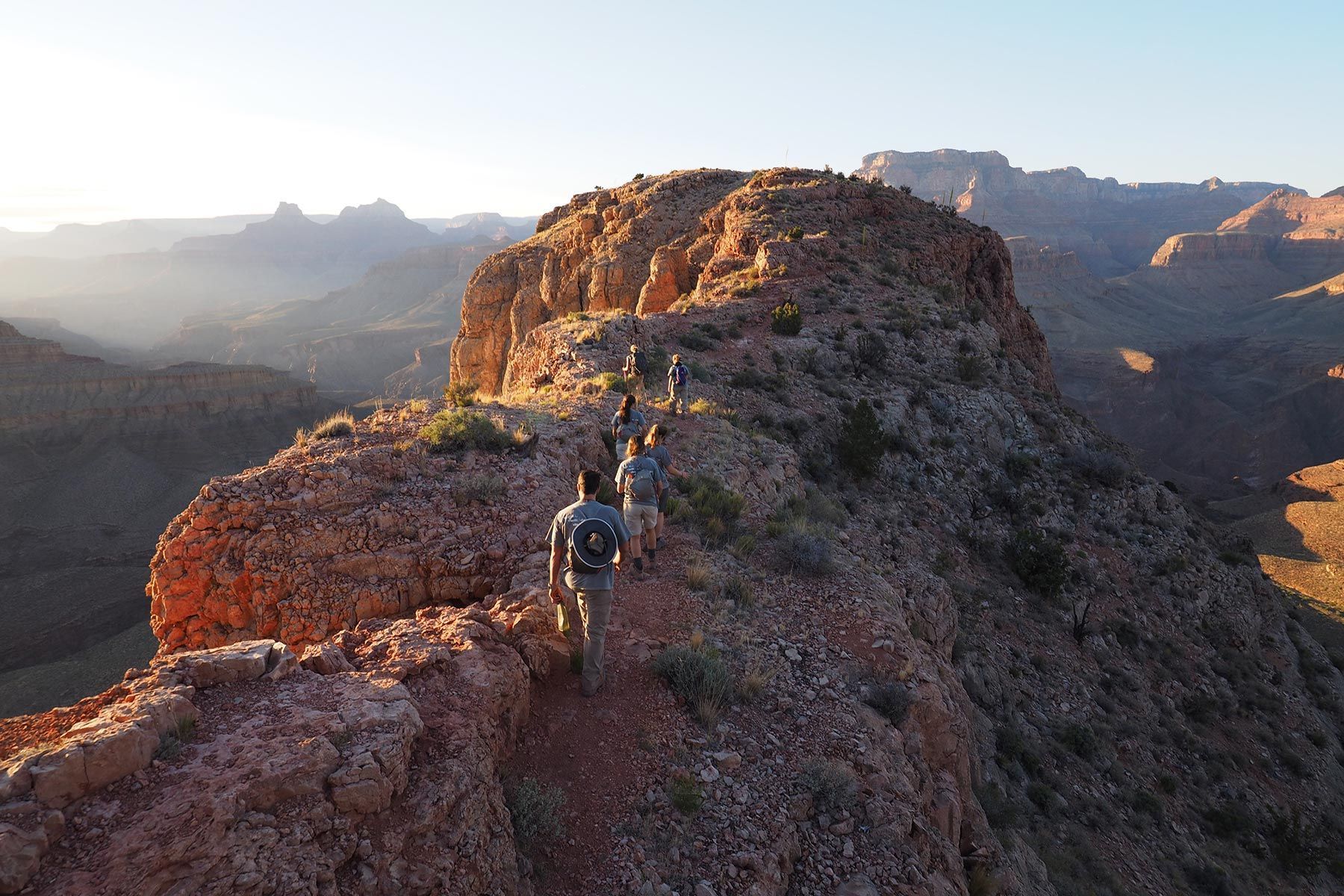
Starting at
$1,650
Grandview Loop
Trip Type: Backpacking
Duration: 3 or 4 days
Distance: 15 or 27 miles
Difficulty: Intermediate +
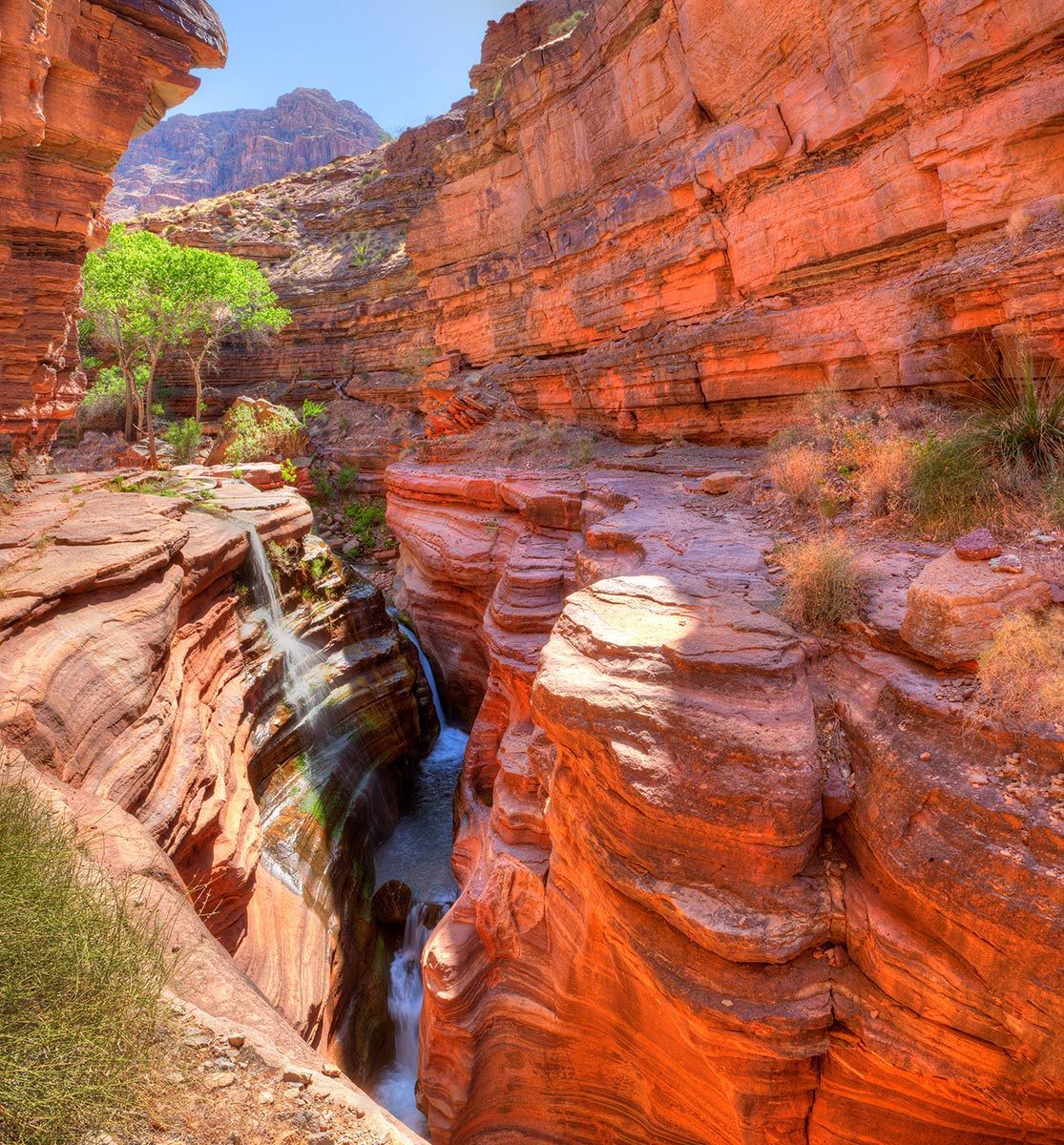
Deer Creek/Thunder River
Trip Type: Backpacking
Duration: 5 Days
Distance: 30 miles
Difficulty: Advanced
Starting at
$2,075
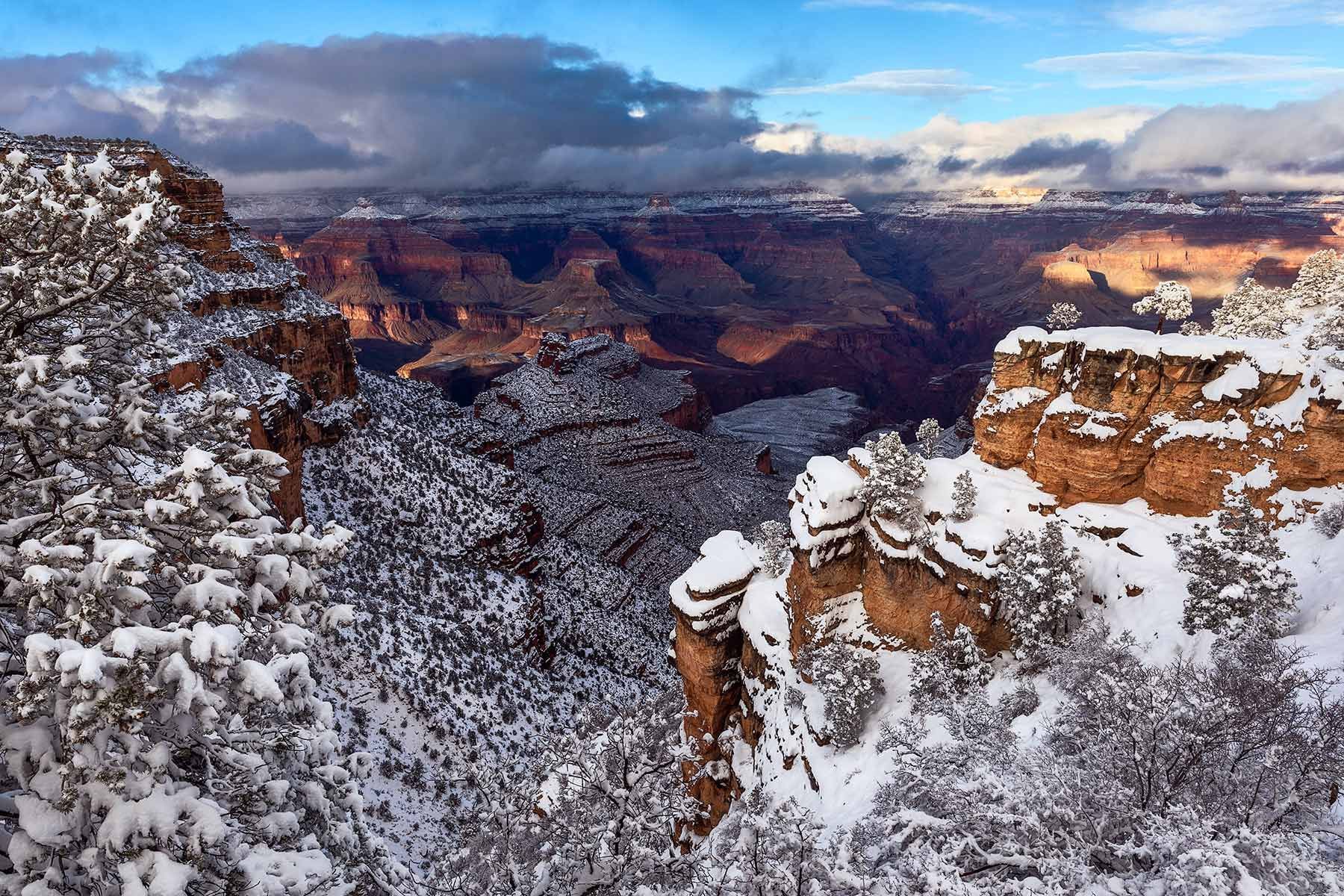
Winter Rim to Rim
Trip Type: Backpacking
Duration: 5 Days
Distance: 45 miles
Difficulty: Intermediate +
Starting at
$2,150
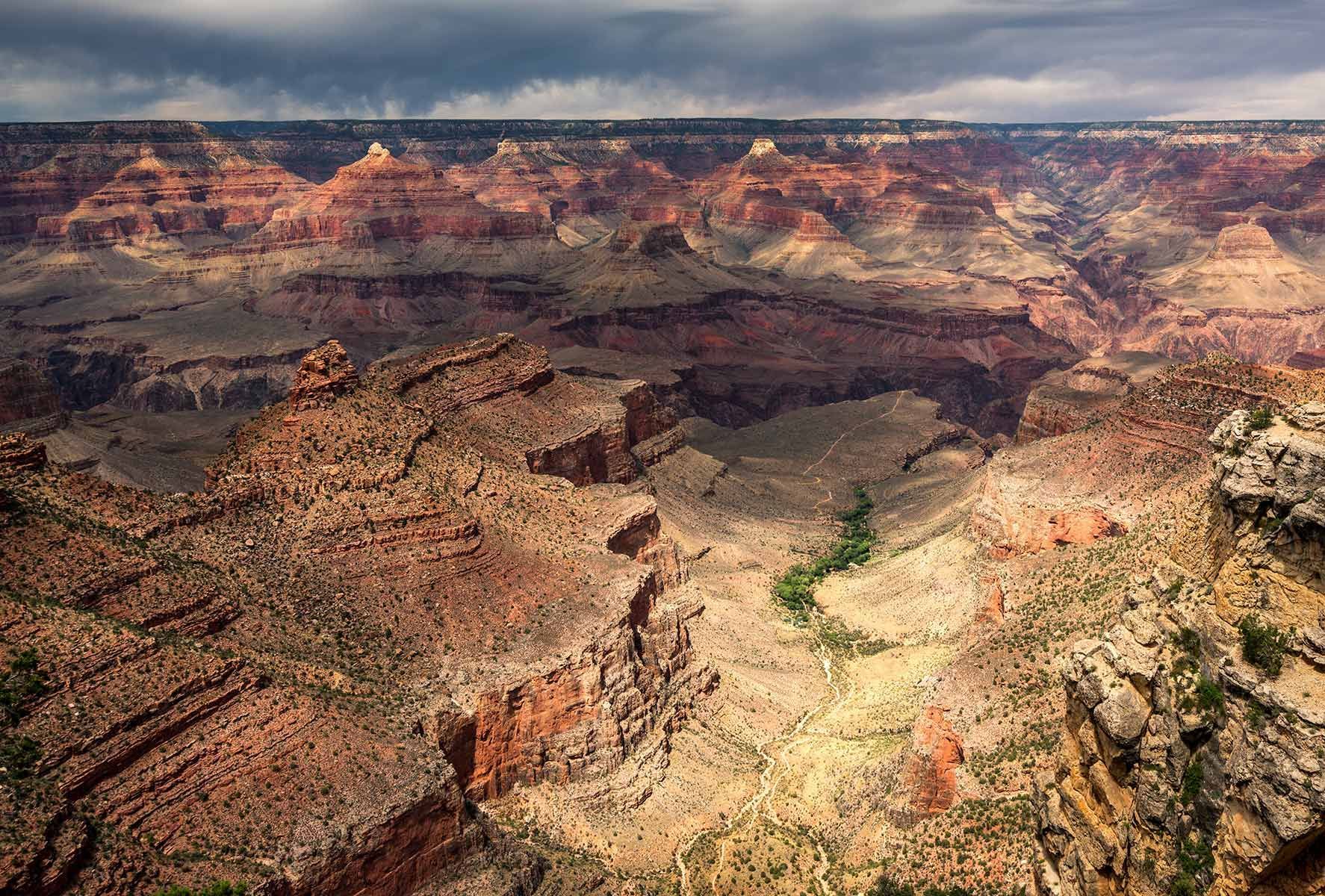
Starting at
$1,475
Havasupai Gardens
Trip Type: Backpacking
Duration: 3 Days
Distance: 16+ miles
Difficulty: Beginner +
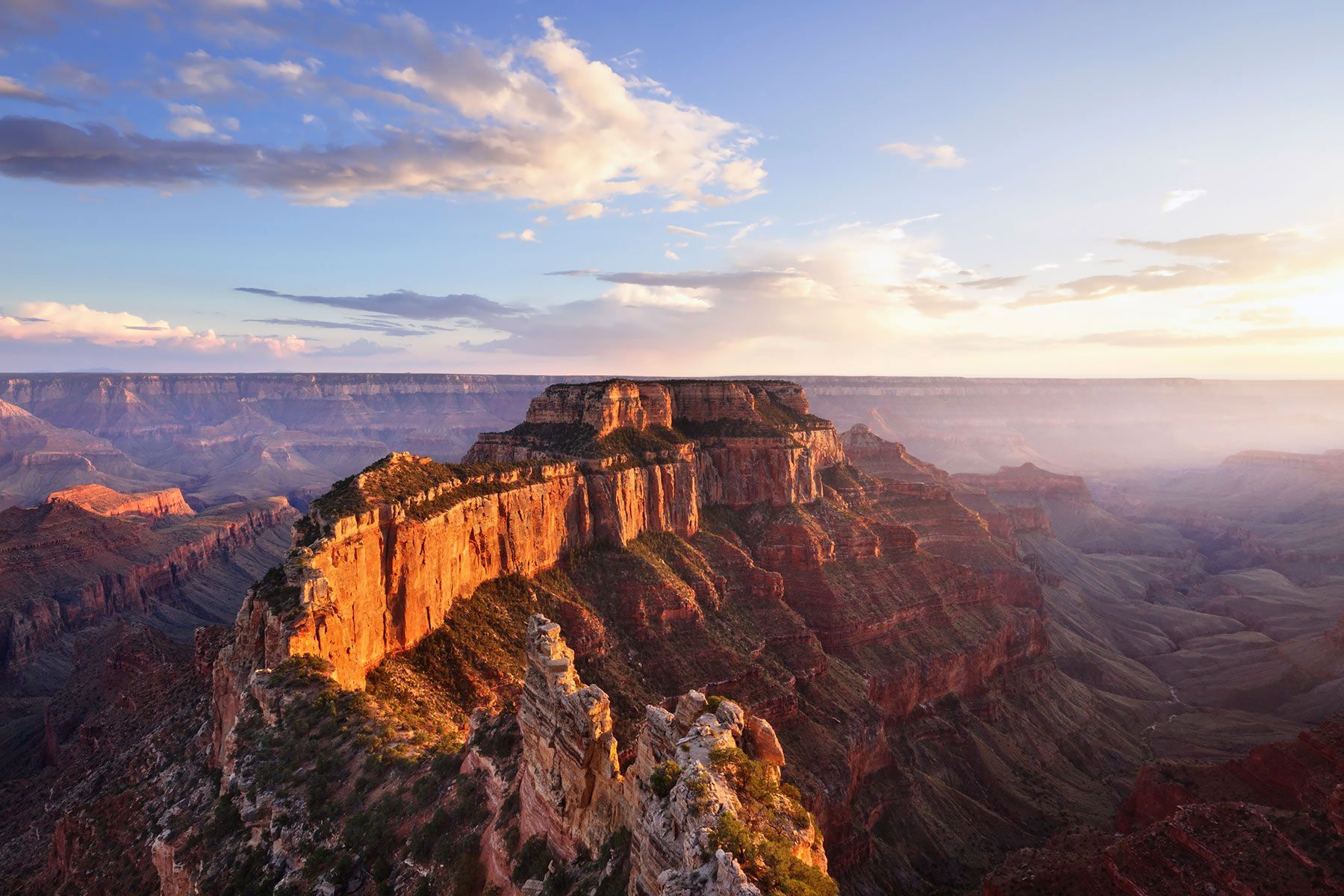
Price:
Custom Pricing
Grand Canyon: Custom Backpacking
Trip Type: Backpacking
Duration: 2 to 10 Days
Distance: Variable
Difficulty: Variable
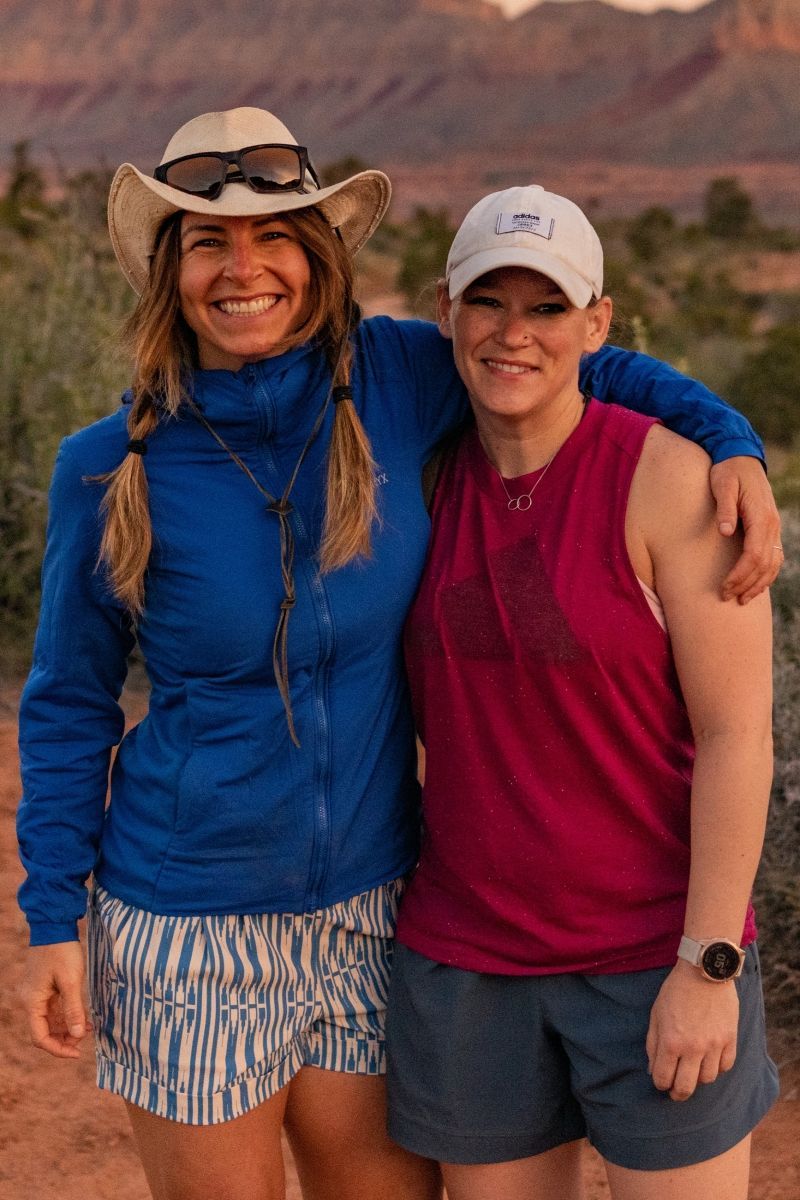
All-Women’s Kanab Creek Wilderness Backpacking
Duration: 5 days
Distance: ~ 28 miles
Difficulty: Intermediate +
Starting at
$2,225
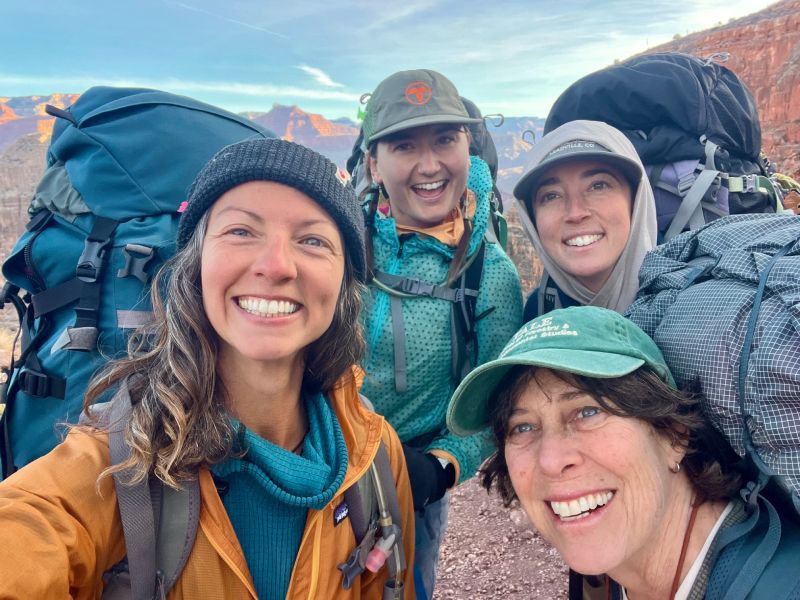
All-Women’s Grandview Loop Backpacking
Duration: 4 days
Distance: ~ 20 miles
Difficulty: Intermediate +
Starting at
$1,850
Far beyond any expectations my wife and I had in our minds. The Hermit Loop showed us a side of the canyon we never knew existed. It really shows the vastness of the canyon and allows you to enjoy it on a more personal level without crowds.
Matt is a very enthusiastic, knowledgeable, and caring guide in addition to being fun. You can tell how passionate he is about the canyon and nurturing similar feelings in his guests. He absolutely made this trip for us, and we will ask for him the next time we travel with FSG! Also, regarding food – we were pleasantly surprised with the quality of food offered and abundance. We certainly did not expect fresh chicken fajitas the first night!
I could not have planned a better trip without the guidance of Matt and owner Dave.
Bill W.
Grand Canyon Permit Information
All Grand Canyon backpacking trips require a backcountry permit and the process for obtaining these permits can be tough to navigate. Fortunately, we handle the permitting process on your behalf so you don’t need to worry about it.
All permits for overnight hiking trips in Grand Canyon are awarded via a random lottery that takes place 4 months prior to the month you want to hike. For example, the lottery for backcountry permits for a trip in October takes place in June and all lottery entries must be submitted by June 1. Results from the lottery drawing can sometimes take up to 3 weeks to be announced, especially for the most popular months of the year.
The Grand Canyon backcountry permit lottery is an extremely competitive process and being awarded a permit is not guaranteed in any way. In order to improve your chances of successfully obtaining a permit, it is encouraged to have as much flexibility in your travel dates as possible. It is also highly encouraged to consider alternate hikes as backup options should your first choice of hike not be available. We can assist you in making an appropriate determination as to backup options.
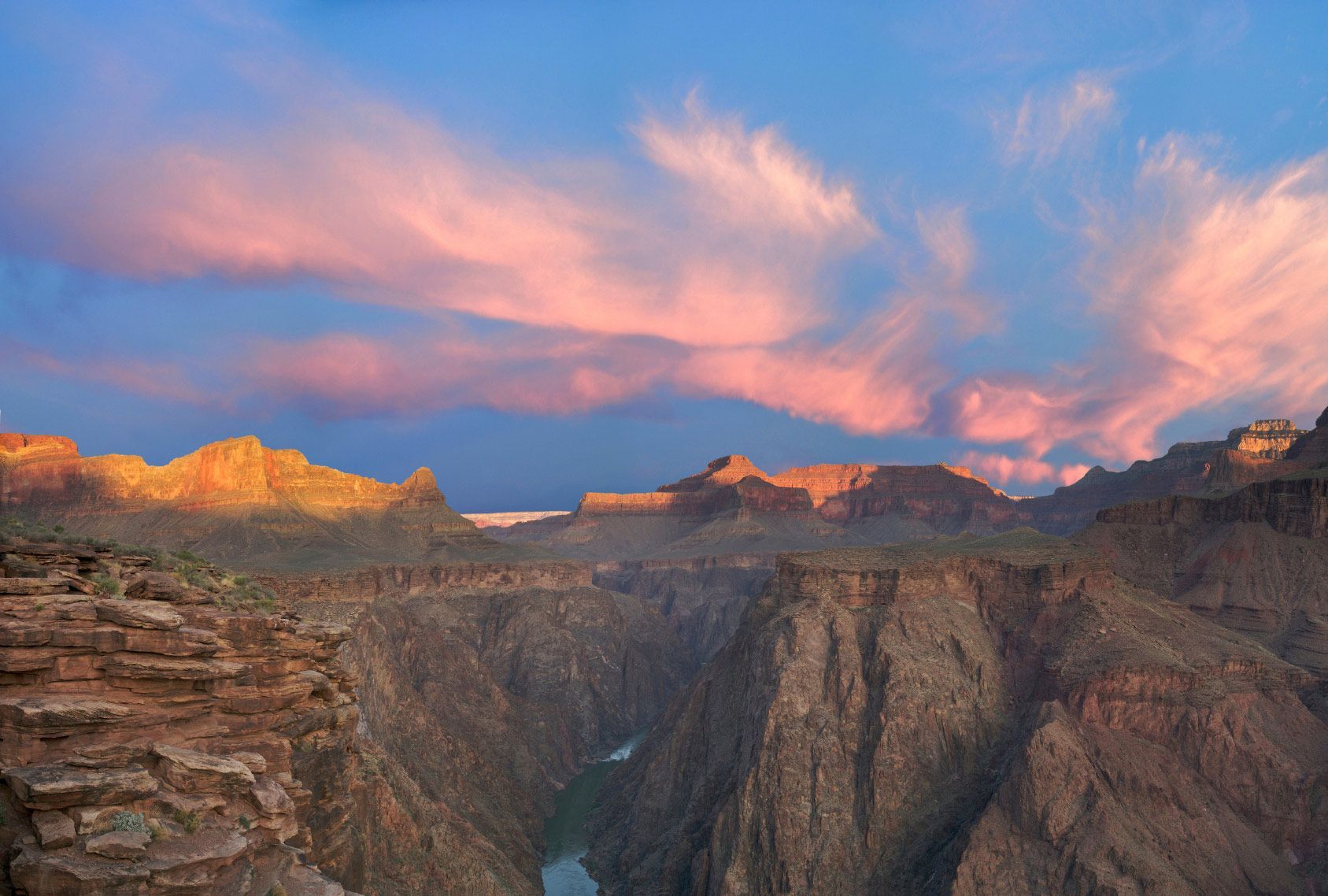
Things to Know
Choosing The Right Trip
How do I choose the right Grand Canyon backpacking trip?
There are several factors to consider when deciding upon an appropriate Grand Canyon backpacking trip. How fit are you to begin with? Do you have previous backpacking experience? What is the difficulty rating of the trip you are considering? How much weight do you feel comfortable carrying? How many days would you like to be hiking? What time of year are you interested in? Are you looking to check Rim to Rim off your Bucket List or do seek quiet, remote backcountry with few other people around?
Rim to Rim or something else?
Rim to Rim is without question the most famous and sought-after hike in Grand Canyon. Over the course of 4 days, we cross the canyon from the North Rim to the South Rim, staying in Cottonwood Campground, Bright Angel Campground, and Havasupai Gardens Campground (but the hike can be complete in the reverse direction or fewer days). We categorize it as an Intermediate level of difficulty but you should still expect a relatively arduous journey, especially if you have never backpacked before. The hike utilizes the North Kaibab Trail and the Bright Angel Trail which are both well-maintained and rather heavily-trafficked trails so you can expect to see plenty of other hikers during your trip. The best times for Rim to Rim hiking are mid-May into early June and September to early November.
Other great trips that utilize the popular Corridor trails include the Canyon Classic and Havasupai Gardens. Both of these backpacking trips offer similarly stunning Grand Canyon views, well-maintained trails, and comfortable campgrounds with basic amenities like treated drinking water, restrooms, and picnic tables.
For those seeking something a little quieter and more off-the-beaten-path, the Hermit Loop is an outstanding backpacking trip lasting 4 or 5 days. It can hiked in either direction but we prefer to start down the Bright Angel Trail and hike out via the Hermit Trail. This trip features an epic 14-mile stretch of the Tonto Trail, offering incredible views, relatively level hiking, and few other hikers. This is a great option for hikers who have already completed Rim to Rim or another Corridor hike, as it provides a nice introduction to the wilder side of Grand Canyon. It’s similarly perfect for hikers with previous backpacking experience or those with very good baseline fitness.
If rugged wilderness and serious physical demands are your goal, then we have a handful of itineraries worth consideration. The Deer Creek/Thunder River Loop is a stunning, yet challenging 5-day backpacking adventure that will surely satisfy the desire for remote wilderness, physical challenge, and unbeatable scenery. Many other options exist for remote adventure and our team is happy to put together the perfect Grand Canyon Backpacking itinerary for your group through one of our Custom Backpacking trips.
Physical Demands
Backpacking trips are strenuous endeavors and the decision to join one of these trips should not be taken lightly. They are intended for active people who exercise regularly, maintain a healthy weight, and do not have any chronic knee issues. You will be carrying a tent, sleeping bag, sleeping pad, all of your personal clothing/toiletries/gear, at least 3 liters of water at a time, and a share of the group food. Every participant must be able to comfortably manage a backpack each day (typically weighing anywhere from 30 to 40 pounds) while hiking for 5 to 8 hours, on steep canyon trails, descending or ascending 2000 to 4800 feet. The descent into Grand Canyon is perhaps the most challenging part of the hike and the physical demands of downhill hiking is often underestimated.
It is each participant’s responsibility to ensure they possess the level of physical fitness required to complete the hike. Do not take this lightly or fail to properly prepare for the hike. If you are not already a very active person in excellent health, then you are encouraged to consider a different trip style.
Time of Year
Grand Canyon National Park is land of extremes, and the climate is no exception. The weather can vary significantly depending on the time of year and the specific location within the canyon. Generally, spring (March to May) and fall (September to mid-November) tend to be the most popular and favorable times for backpacking due to milder temperatures.
Summer (June to August) tends to be extremely hot, especially at the lower elevations. Daytime temperatures can soar well above 100°F (38°C), making hiking in the inner canyon potentially dangerous and certainly not that much fun.
Winter (December to February) can bring cold temperatures and snow to the Grand Canyon, especially at higher elevations. But winter backpacking can be very rewarding due to the absence of other visitors and quite often some very mild daytime temperatures. Snow is not particularly common in the inner canyon.
We can help you decide
Even after considering all of the above factors, it can still be tough to determine which trip is best for you. Therefore, we encourage you to give us a call and speak with one of our trip specialists. We can help you identify which trip might be most appropriate based upon your fitness level, experience, and when you’re hoping to embark on your Grand Adventure.
What kind of gear do we provide?
When you join one of our guided backpacking trips, we provide just about all the gear required to participate: backpacks, tents, sleeping bags, sleeping pads, trekking poles, group cooking gear, first-aid supplies, and emergency communication devices. All of the gear is high-quality, tried and true, brand name equipment that we have been putting to the test for over two decades. Here’s a sampling of the equipment you are likely to see on your trip.
- Deuter AirContact series backpacks (men’s and women’s-specific packs)
- MSR Hubba or Sierra Designs Meteor Lite tents
- Marmot synthetic-fill sleeping bags
- Thermarest Prolite Apex sleeping pads
- Black Diamond trekking poles
- MSR backpacking stoves
- GSI bowls/cups/utensils
- Comprehensive first-aid kits for major and minor injuries
- Emergency communication devices
Can I bring my own gear?
Guests are welcome to bring their own gear, as long as we deem it appropriate for the specific trip and expected weather conditions. Personal backpacks must be a minimum of 60-liter capacity. Sleeping bags must be backpacking-specific and appropriate for the expected low temperatures for the trip. And if you plan to bring your own tent, it must be free-standing (i.e., it doesn’t require being staked-out). If you are hoping to bring any of your own gear, please contact us well in advance of your trip to discuss this.
Learn More About Grand Canyon Backpacking
Backpacking In the Grand Canyon
What’s the most popular Grand Canyon backpacking trip?
Rim to Rim is undoubtedly the most popular Grand Canyon backpacking trip. This iconic trek involves hiking from one rim of the Grand Canyon to the other, typically from the North Rim to the South Rim or vice versa. And while it can be completed in two or three days, we offer a 4-day itinerary which allows plenty of time to really enjoy the trip and embark on a number of interesting side hikes along the way. You can spend one night in each of the Corridor Campgrounds (Cottonwood Camp, Bright Angel Camp, and Havasupai Gardens Camp).
What’s the best Grand Canyon trip for seeing waterfalls?
When most people mention Grand Canyon and waterfalls in the same sentence, they are likely talking about the Havasupai Reservation, home to the Havasupai Tribe and world-renowned for a series of incredible waterfalls and turquoise-blue water. The most impressive waterfalls are Havasu Falls, Mooney Falls, and Beaver Falls, but there are several other smaller waterfalls, as well. You’ll need to secure camping permits through the Havasupai Tribe since their lands in Grand Canyon are separate and distinct from those administered by the National Park Service.
Within Grand Canyon National Park, there are several well-known waterfalls. Ribbon Falls is a beautiful waterfall tucked into an impressive alcove just west off the North Kaibab Trail near Cottonwood Camp. It’s easily visited as part of a Rim to Rim trip or a hike to Phantom Ranch.
Deer Creek Falls and Thunder River are spectacular waterfalls in the more isolated western Grand Canyon. You’ll have to backpack the Bill Hall and Thunder River Trails to get there and this hike is very strenuous. The only other way to see these waterfalls is by embarking on a whitewater rafting trip through Grand Canyon.
Cheyava Falls is the tallest waterfall in Grand Canyon. And while hard to accurately measure this ephemeral, cascading fall, some estimates put it at 800 feet tall. But in order to see Cheyava Falls, you’ll need to time it just right, as it only flows in the spring months during snowmelt on the North Rim. Then you will need to secure a backcountry permit and plan a 5-day backpacking trip to get out to Clear Creek canyon, where Cheyava Falls can be found.
Is Grand Canyon hiking dangerous?
Though just about any outdoor pursuit involves some element of risk and potential danger, Grand Canyon is a particularly challenging due to several factors. First of all, just about every hike in Grand Canyon starts by going downhill, which can seem pretty easy for a casual day hike. But as the views get better and better and the lure of what might be around the next corner pulls you farther and farther below the rim, the ill-prepared hiker can soon find themselves in too deep (literally and figuratively). As soon as you turn around and start going back uphill, you realize how demanding the never-ending ascent can be. For some people, it will take at least twice as long to hike out than it did to hike down.
On the other hand, those planning a hike all the way to the bottom of Grand Canyon are often completely surprised at how challenging the non-stop downhill hiking can prove. While many hikers get nervous about the hike out, it’s often the hike down that proves overwhelming. The seemingly unending descent is punishing on knees and can rapidly fatigue leg muscles.
Finally, the climate and environmental challenges of Grand Canyon can be incredibly challenging. A summer morning on the South Rim can present cool temperatures seemingly perfect for hiking. Unwitting hikers start trotting down the South Kaibab Trail and before they know it, they’re 4 miles down the trail, the temperatures are pushing 90 degrees Fahrenheit at 10:00am and there’s no shade and no water anywhere. The hiker starts heading back uphill and quickly finds that the sun exposure, heat, and strenuous hiking combine to overwhelm them completely. They rapidly run out of drinking water and discover they didn’t bring nearly enough food keep them energized. Every year, at least a few hikers become so overwhelmed that they require an emergency rescue and some never make it back out.
In short, Grand Canyon is a land of extremes. Whether it’s the heat, the brutal cold of winter, or the challenging hiking terrain, ill-prepared hikers can easily become overwhelmed and find themselves in a dangerous situation. On the other hand, those who do their homework, plan accordingly, and physically prepare can have a perfectly safe and extremely rewarding experience while hiking Grand Canyon.

